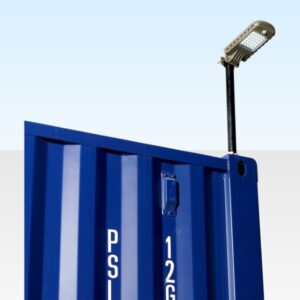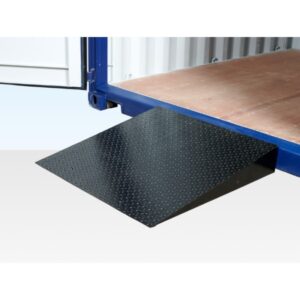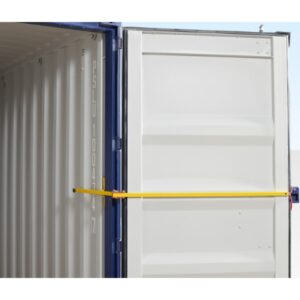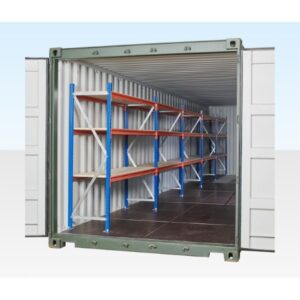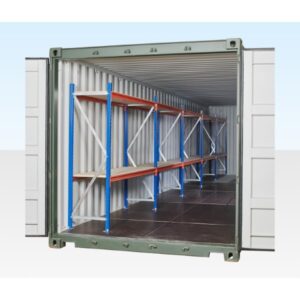When it comes to shipping goods globally, choosing the right container size is crucial. Two popular options are the 20 ft and 40 ft containers, each offering unique benefits. In this comprehensive article, we’ll delve into the 20 ft vs 40 ft container cost, exploring the various factors that influence their prices. We’ll also examine their sizes, capacities, and use cases to help you make an informed decision for your shipping needs.
Table of Contents
20 ft vs 40 ft Container Cost
Shipping container costs can vary significantly depending on several factors. Let’s explore the main considerations that impact the prices of 20 ft and 40 ft containers.
- Container Size: A primary factor influencing the cost is the size of the container. Naturally, a 40 ft container will be more expensive than a 20 ft one due to its larger capacity.
- Material Quality: The quality of the materials used in the construction of the container affects its cost. High-grade materials may result in a higher upfront cost but can provide better durability and longevity, making them cost-effective in the long run.
- New vs. Used Containers: Purchasing a new container is generally more expensive than buying a used one. However, used containers can still be in excellent condition and may be a more budget-friendly option.
- Customization: Custom modifications, such as adding ventilation, insulation, or doors, can increase the cost of the container.
- Supplier and Location: Different suppliers and regions may offer varying prices due to factors like demand, competition, and transportation costs.
- Additional Features: Some containers come with additional features like lockboxes, which can influence their overall cost.
- Seasonal Fluctuations: Container prices may fluctuate throughout the year due to seasonal demands.
Understanding LSI Keywords
Before diving further into the specifics of container costs, let’s take a moment to understand LSI (Latent Semantic Indexing) Keywords. These are related terms that help search engines understand the context and relevance of the main keyword. Here are some LSI keywords related to our topic:
- Container sizes and prices
- Shipping container dimensions
- Freight container costs
- Buying containers for shipping
- Cargo container expenses
Factors Affecting Container Prices
1. Container Size and Capacity
A crucial distinction between 20 ft and 40 ft containers lies in their sizes and capacities.
The 20 ft container typically has dimensions of 20 feet in length, 8 feet in width, and 8.5 feet in height. It offers a capacity of around 1,170 cubic feet and can hold approximately 10 to 11 standard pallets.
On the other hand, the 40 ft container measures 40 feet in length, 8 feet in width, and 8.5 feet in height. It provides a more substantial capacity of approximately 2,390 cubic feet and can accommodate 20 to 22 standard pallets.
2. Container Condition
The condition of the container plays a significant role in determining its cost. New containers, free from wear and tear, are naturally more expensive. However, they are ideal for delicate or valuable cargo. Used containers, which have been thoroughly inspected for damage, offer a more cost-effective option without compromising on quality.
3. Shipping Route and Distance
Shipping costs are heavily influenced by the distance and route the container will travel. Longer distances and less frequented routes may incur higher expenses.
4. Container Type and Purpose
Different types of containers are designed for specific purposes, such as dry storage, refrigeration, or open-top for oversized cargo. The cost of the container may vary based on its intended use.
5. Additional Services
If you require additional services such as loading and unloading, storage, or insurance, these will add to the overall container cost.
Which Container Size is Right for You?
When choosing between a 20 ft and a 40 ft container, it’s essential to consider your specific needs and requirements. Let’s explore the best use cases for each container size.
20 ft Container:
- Ideal for small to medium-sized shipments or personal belongings.
- Suitable for businesses with limited cargo volume.
- Cost-effective for short-distance shipments.
40 ft Container:
- Best for larger shipments or bulk cargo.
- Suitable for businesses with high cargo volume.
- Cost-effective for long-distance shipments, as it can hold more goods per unit of shipping cost.
FAQs
Q: What is the cost difference between a 20 ft and a 40 ft container? A: Generally, a 40 ft container can cost 1.5 to 3 times more than a 20 ft container due to its larger size and capacity.
Q: Can I buy a used 40 ft container for my business? A: Yes, purchasing a used 40 ft container can be a cost-effective option for businesses with lower budgets.
Q: How much cargo can a 20 ft container hold? A: A 20 ft container can hold around 10 to 11 standard pallets of cargo.
Q: Are there any discounts for seasonal container purchases? A: Yes, some suppliers may offer seasonal discounts, so it’s worth inquiring about potential cost savings.
Q: Can I customize the container according to my requirements? A: Yes, you can request various modifications to suit your specific needs, but keep in mind that customization may increase the overall cost.
Q: Which container size is commonly used in international trade? A: The 40 ft container is more prevalent in international trade due to its larger capacity, which allows for more goods to be transported in a single shipment.
Conclusion
Choosing the right container size can significantly impact your shipping costs and overall logistics efficiency. The 20 ft vs 40 ft container cost comparison highlights the importance of evaluating your cargo volume, distance, and specific requirements. By considering these factors and understanding the various elements that influence container prices, you can make an informed decision that best suits your shipping needs.
This week’s popular products
-
Original price was: $252.00.$210.00Current price is: $210.00.
Container Solar Floodlight
-
Original price was: $288.00.$240.00Current price is: $240.00.
Container Ramp
-
Original price was: $70.00.$59.00Current price is: $59.00.
Container Door Stay

